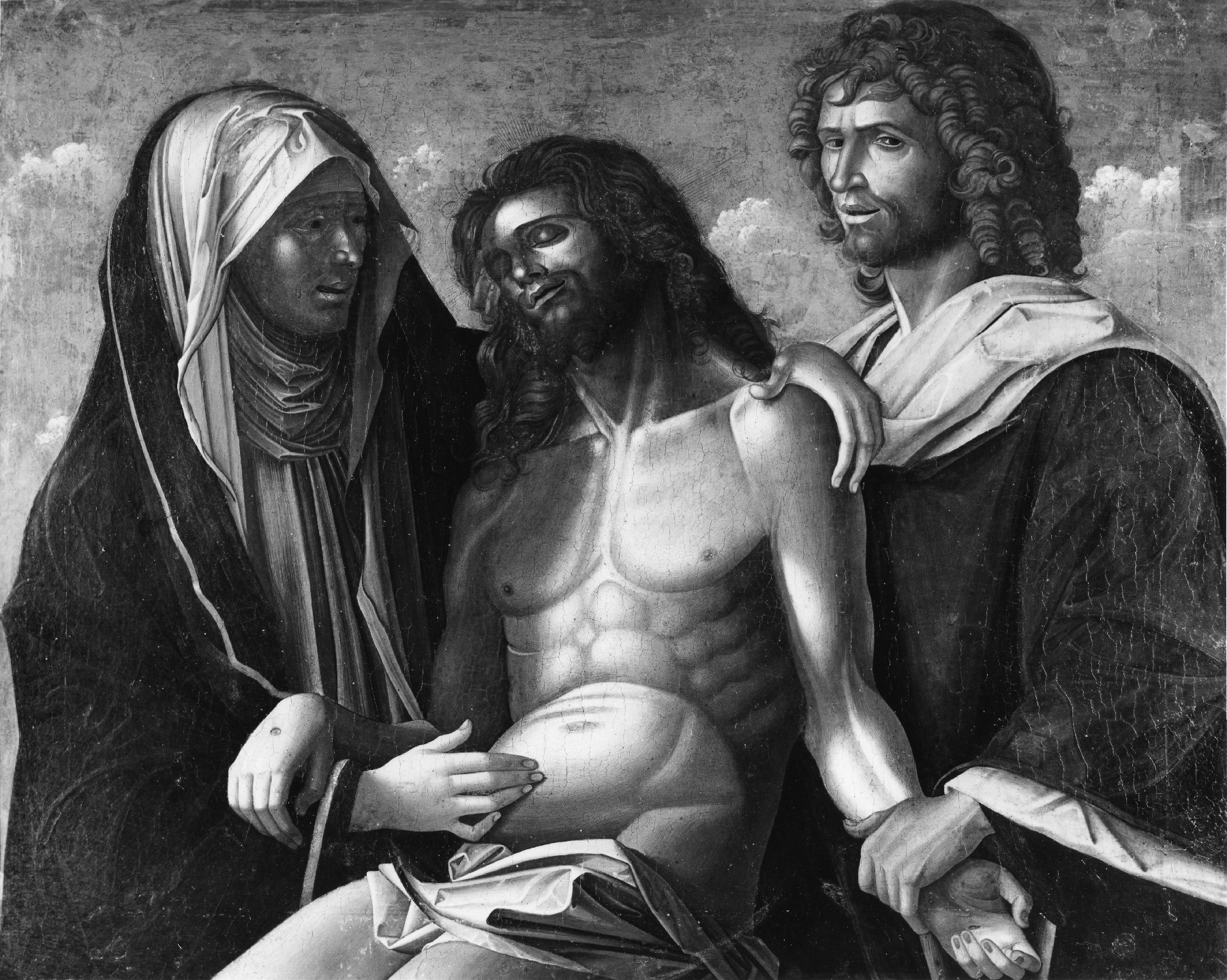The Dead Christ with the Virgin and Saint John the Evangelist
(Renaissance Europe )
The body of the dead Christ is held by his mourning mother and the apostle John. With an expression of deep anguish, John looks out toward the viewers and invites them to join in his and Mary's sorrows. Probably intended as the focus for private prayer in a home or monastic cell, the painting is a close copy of a work from the late 1400s by Giovanni Bellini (ca. 1431/36-1519) at the Gemäldegalerie, Berlin. Bellini was the leading artist in Venice in these years, particularly renowned for his depiction of light and atmosphere. The artist of this painting instead focuses on the careful delineation of line and contour. Note, for instance, the wrinkles in in the figures’ faces or how the folds in their robes are painstakingly described, creating a sharp and rigid effect. The overall technique suggests the artist was trained in the tradition of Byzantine icon painting; he was probably one of the many now-anonymous Greek or Croatian painters who worked in the Veneto in the early 1500s, reformulating the compositions of the most prominent Venetian artists with the more stylized techniques of icon painting.
Provenance
Provenance (from the French provenir, 'to come from/forth') is the chronology of the ownership, custody, or location of a historical object. Learn more about provenance at the Walters.
Don Marcello Massarenti Collection, Rome [date and mode of acquisition unknown] [1897 catalogue: no. 443, as school of Carlo Crivelli, copy]; Henry Walters, Baltimore, 1902, by purchase; Walters Art Museum, 1931, by bequest.
Exhibitions
| 2007-2008 | Déjà Vu? The Repeating Image in Renaissance and Baroque Art. The Walters Art Museum, Baltimore. |
Geographies
Italy, Venice (Place of Origin)
Measurements
Painted surface H: 15 3/8 x W: 19 3/16 x Approx. D: 1 in. (39 x 48.8 x 2.5 cm)
Credit Line
Acquired by Henry Walters with the Massarenti Collection, 1902
Location in Museum
Not on view
Accession Number
In libraries, galleries, museums, and archives, an accession number is a unique identifier assigned to each object in the collection.
In libraries, galleries, museums, and archives, an accession number is a unique identifier assigned to each object in the collection.
37.1903


